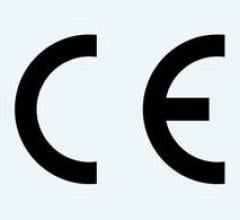
May 15, 2012 — In a keynote Founders’ Lecture at the Society for Cardiovascular Angiography and Interventions (SCAI) 2012 Scientific Session on May 10, Ted Feldman, M.D., FSCAI, highlighted how percutaneous valve therapies may soon be the accepted treatment for a wide range of patients.
“Today, percutaneous valve replacement is a clear reality for selected patients,” Feldman said. “And it will be mainstream therapy for most patients in the future. These therapies are life-changing and dramatic.”
There are a variety of techniques and devices used in percutaneous valve therapies, depending on whether treatment is intended to repair or replace the diseased valve, and which valve is faulty: the pulmonary valve, which controls the flow of blood from the right ventricle to the lungs; the mitral valve, which controls blood flow between the upper and lower chambers on the left side of the heart; or the aortic valve, which controls flow between the left ventricle and the rest of the body.
What all techniques have in common is the minimally invasive approach to treatment. With percutaneous valve therapies, patients avoid the need for the chest to be opened and the ribs spread apart during surgery on the heart. Instead, a catheter is threaded into the heart through a needle puncture in the groin. At that point a device may be used to widen a narrowed valve opening, help leaky valve flaps to seal better or insert an entirely new valve mounted within an expandable metal stent.
“The most gratifying part of this whole adventure in catheter therapy is taking patients who are incapacitated with heart failure because of a leaky mitral valve or a narrowed aortic valve, and transforming their lives,” Feldman said.
The idea that a catheter could be used to treat narrowed heart valves dates back to the 1950s, but the pivotal turning point in percutaneous valve therapy was the development in the late 1980s and early 1990s of prototype stent valves. It took another decade to achieve implantation of the first percutaneous pulmonary and aortic valves in humans in the early 2000s. Similarly, researchers worked for more than a decade in the laboratory before interventional cardiologists performed the first percutaneous procedures to repair mitral valves in patients in 2003.
“Understanding the history and development of these novel therapies is key to both advancing our current device therapies and inventing the next wave,” Feldman said. “The pioneering spirit of the people who made these therapies possible is implicit. None of these things happened easily.”
The road forward requires a great deal of study, he added. Physicians and researchers must balance the desire to treat patients with the least invasive methods against the need to scientifically prove in clinical trials that percutaneous valve therapies are safe, effective and long-lasting, especially if they are to be offered to younger, healthier patients.
“On the one hand these therapies are so appealing that anybody who hears about them thinks, ‘Why would we ever do conventional surgery again?’” Feldman said. “On the other hand, we’re really just at the beginning. It will take a few years before we have the results of the latest clinical trials. In the meantime, we’re already seeing improvements in valve devices and procedures.”
Feldman is a consultant to and receives research grants from Abbott Vascular, Boston Scientific and Edwards Lifesciences.
For more information: www.scai.org


 May 02, 2025
May 02, 2025 








